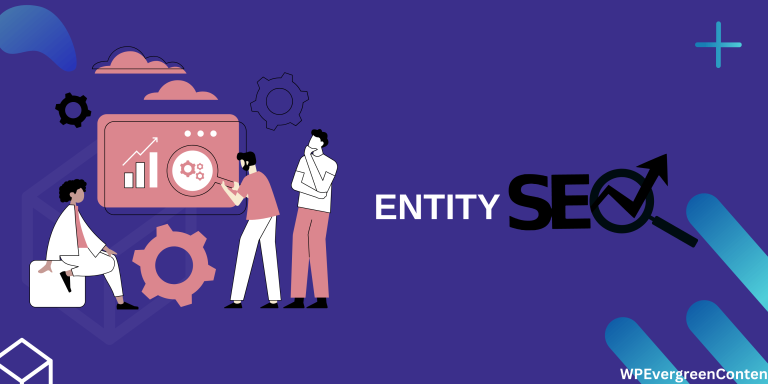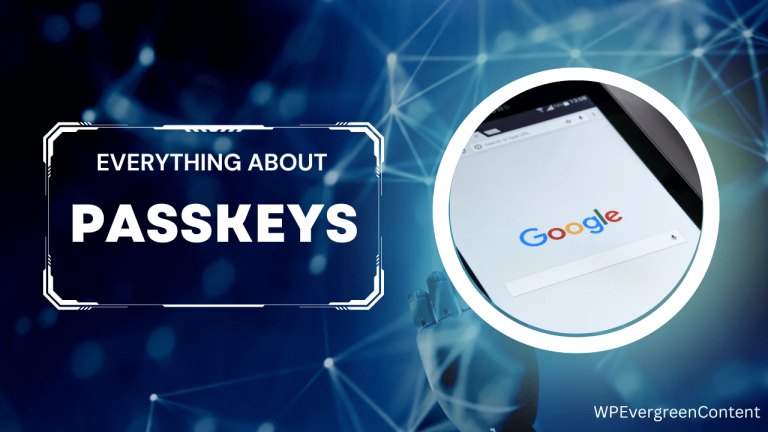SEO Glossary: Essential Terms and Phrases You Should Know
Search Engine Optimization (SEO) is a set of practices that help rank your website higher in web search results. It is the most useful way to make your content visible to people and gain organic traffic.
As SEO is a crucial part of web learning, it is better to know the terms, common phrases, and definitions first. In this article, we are going to share an SEO glossary with you which will be useful, to begin with.
Previously, we published a detailed guide on WordPress glossary and now We’re here with an SEO glossary. We’ve categorized the most commonly used SEO terms into 7 groups.
1. SEO Glossary 101 (Fundamentals Terms)
Here, we are going to cover the common and must-know terms and phrases that you will commonly see in different areas of SEO.
Backlinks
Backlinks are also known as inbound links. These are links put on one website to drive traffic to your website. Search engines use such links to help discover and rank content.
Black Hat SEO
Black hat SEO refers to the practices that violate Google’s quality guidelines to rank websites in SERPs quickly.
Bot/Search Bot
It is known as a spider that crawls your web pages and indexes them.
CMS
CMS stands for Content Management System that enables the users to manage and publish content with a user-friendly web experience.
Content
Information includes texts and images that you publish on your website.
Crawler
Crawler is a search engine bot that collects data from the internet and your live websites.
Crawling
A process by which search engines discover and collect updated content from websites.
Domain
A quick-to-remember name that defines the address of your website.
HTML
Hypertext markup language, aka HTML, is the website-building language search engines understand when analyzing a web page.
HTTP
HTTP refers to the intra-network structure that exchanges information among the web pages of your website.
HTTPS
HTTPS secures the data and information of your website when you visit it from different browsers or network connections. If you have HTTPS, that browser or server cannot read your address, mail, and password.
Indexing
A process by which search engines store and organize your web content to provide super-fast responses to search queries.
Keyword
Words and phrases by which people make queries in search engines.
Keyword Research
Keyword research is the study to find out the most used words and phrases people use to make search queries.
Link
The process to mutually hook up internal web pages and also with external websites.
Off-Page SEO
Actions are taken outside of a website to improve its ranking in SERPs.
On-Page SEO
The act to optimize a website to popular search engines with specific keywords to improve their ranking in SERPs.
Organic
It refers to having the natural placement of a website in the SERP without any paid marketing.
Query
Set of words and phrases people type in the search bar.
Search Difficulty
A study evaluating how difficult it would be to rank a website on Search Engine Results Pages (SERPs) for specific keywords.
Search Engine
A web program retrieves information from its database whenever somebody searches using specific keywords. For example Google, yahoo, Ask.com, Microsoft Bing, etc.
Search Intent
It indicates the primary goal of the users whenever they make a query in search engines.
Search Volume
An analytical metric that shows how many queries users are making with particular keywords.
SERP
SERP stands for Search Engine Result Pages. It refers to the websites you see after making a search quarry.
Traffic
Traffic means the number of times people click and visit your website.
URL
URL (Uniform Resource Locator) also known as ‘web address’ specifies the location of a website and its content on the internet.
Web Analytics
Web analytics help site owners to have a quick overview of their web performance through various metrics, like traffic, conversion rate, source of traffic, etc.
Webmaster Guidelines
Google, Bing, and popular search engines publish webmaster guidelines to help site owners to create their content properly so that these can be easily found in SERPs.
White Hat
White hat SEO is the practice that people follow to rank and optimize their websites, complying with Google’s quality guidelines.
2. SEO Glossary: Search Engine Functions
This category is all about terms related to search engine functionalities and mechanisms. These SEO terms will help you understand how search engines discover a piece of content, index that, and show that in the search results.
2xx Success Status Codes
Codes like 201, 202, and 203… imply that the request for a page is successful.
4xx Error Status Codes
Codes like 401, 402, and 403… convey the message that the request for a page isn’t successful.
5xx Error Status Codes
501, 502, 503… these codes indicate that the server can’t process your request as intended.
Get more information about status codes from this List of HTTP status codes.
AI (Artificial Intelligence)
To generate relevant results for your queries, search engines use artificial intelligence. Search engines can predict which results are most likely to satisfy a search query with the help of artificial intelligence, machine learning, and deep learning.
Algorithms
Algorithms are a set of rules or formulas that determines the meaningful order of available information.
Backlinks
Backlinks are also known as inbound links. These are links put on one website to drive traffic to your website. Search engines use such links to help discover and rank content.
Bots/Crawlers/Spiders
These are bots that look over the internet to find content to facilitate the indexing process.
Cache
Cache refers to the temporarily saved version of your web page.
Caffeine
Caffeine helps Google bots to find the content following a web indexing system. This index comprising the collection of web content is called caffeine.
Citations
Citation means the web-based reference to a business’s name, website, address, phone number, etc.
Crawl Budget
Crawler bots inspect a limited number of pages of your website. The crawl budget determines this number.
Crawler Directives
You can guide the crawlers with directions on how you want them to search and find out your content.
Engagement
Engagement is a parameter that helps measure the performance of your website. It shows how your searchers interact with your site’s search results.
Google Search Console
It is a free tool by Google that enables you to monitor how your site performs as per searching is concerned.
Index
Index is the database that contains all the content of your website as fetched by crawlers. Search engines show content only if that is available in the index.
Index Coverage Report
You can check whether a web page of your site is available in the index with the help of an index coverage report prepared by the Google search console.
Internal Links
Links that connect a web page to another webpage within your website are called internal links. These links are important to prove that you have relevant information across your blogs.
Manual Penalty
If a considerable number of pages of your website violate Google’s quality guidelines, a human reviewer may identify that and penalize you for the malpractice.
Meta Robots Tag
A set of codes that direct the crawlers about how to crawl and index your web page content.
Navigation
Smart placement of navigation menus helps visitors find your content conveniently and improve user experience. Navigation is the collection of links that direct users to different web pages.
No-index Tag
It refers to a meta tag that prevents search engines from indexing a certain page.
PageRank
PageRank is Google’s algorithm that measures the quality and quantity of the external links a webpage has. It analyzes all the links directed to a certain webpage and estimates the page’s importance and relevance.
Personalization
Search engines show results to users based on their search history, location, and other factors unique to them. This process is called personalization.
RankBrain
RankBrain refers to the machine learning-enabled algorithm of Google that determines the relevance and credibility of information and directs which content will appear first in search results.
Relevance
Relevance is a crucial term in SEO. Since all the search results appear in the SERP only when they prove to be relevant to the search query, relevance is important in every aspect of the search engine optimization process.
Search Quality Rater Guidelines
This is a comprehensive guideline for human reviewers who work for Google and determine the quality of the web pages.
URL Folders/Taxonomy
URL folders categorize the type of URLs depending on the type of content they link to. For example, wedevs.com is the parent URL, and ‘wedevs.com/blog’ refers to a folder that contains all blogs.
3. SEO Glossary: Keyword Research
Keyword research is a critical part of SEO that lays the foundation of your content and enhances its chance to rank higher. Your content will appear in the search results more often if you can choose the right keywords.
You should know the following terms related to keyword research to excel in SEO knowledge.
Ambiguous Intent
If the keywords lack meaningful intent, they will be considered ambiguous keywords. This ambiguity leads to failure in search engine rankings.
Buying Intent
If a person searches for keywords that show his intent to buy something, that keyword has to buy intent. For example, “best computer monitor” implies that the searcher is interested in buying a computer monitor.
Investigation Queries
This is another version of buying intent. These search queries usually ask for information about product comparison, product review, etc., related to a service or product.
Informational Queries
If keywords refer to a piece of information or answers to any question or how-to inquiries, they can be called informational queries.
Keyword Cannibalization
Keyword cannibalization refers to having several blog posts or articles listed on your site that rank for the same search query in Google.
Keyword Density
Keyword density refers to the frequency of keywords used within every 100 words. If the keyword density is 2%, it means that the keyword is used twice in a hundred words,
Keyword Difficulty
Keyword difficulty is an estimated score that expresses how difficult a keyword is to rank on Google and other search engines. Different tools use different parameters to measure this score.
Keyword Stuffing
Injecting keywords throughout your article is necessary to rank on the search engines. At the same time, too much use of keywords hampers the ranking chance to a great extent. Unnatural and excessive use of keywords is called keyword stuffing.
LSI Keyword
LSI refers to latent semantic indexing. Search engines such as Google use this method to analyze and compare relationships between various terms and concepts. Semantically related keywords are LSI keywords.
Local Queries
If keywords ask for information based on a specific location, they are called local queries. Search queries like ‘restaurants near me, or ‘it companies in Singapore’ are examples of local queries.
Long-tail Keywords
Long-tail keywords are typically longer variants of the main keyword. Usually, long-tail keywords search for specific information. For example, a longtail keyword for the query ‘restaurants near me’ can be ‘pizza restaurants near me.’
Navigational Queries
When a user searches for a piece of specific information ignoring other related content, it is called a navigational query. For example, if you search by using ‘wpevergreencontent blog’, you will get suggestions for the blog page first. Instead, if you search by ‘wpevergreencontent’ only, you will get the home page first.
Search Volume
Search volume is very critical in terms of search engine optimization. Volume refers to the number of queries made against a keyword in a month. The more search volume a keyword has, the more you can benefit from writing content based on that keyword.
Seasonal Trends
Seasonal trends refer to trendy keywords that become popular at a specific time of the year only. For example, Christmas deal-related queries will stay trendy throughout December only.
Seed Keywords
This is more like a niche that you’re working with. It is the main keyword that represents your business and describes the service or product you offer.
4. SEO Glossary: On-Page Optimization
It optimizes web pages through keywords to rank them in search engine results. It helps to increase web visibility and gain organic traffic.
10 Blue links
It refers to the traditional format of displaying 10 websites in Search Engine Result Pages (SERP) whenever someone inputs a query in the search box.
Alt Text
Alternative text is a written copy in HTML code that describes the photos and images in web pages.
Anchor Text
A clickable text with which you link your web pages.
Answer Box
A list of questions appeared on SERPs related to the queries of users. Clicking the box expands the area and reveals a short or long answer.
DoFollow
Dofollow is the default status of a link. Allowing do-follow to your links means you are letting the search engines follow those particular links.
Duplicate Contents
Contents that are shared among multiple pages of a website.
Featured Snippet
A brief overview or answer box that appears on top of your Search Engine Result Pages for specific queries.
Location Modifier
It refers to the location-specific keywords that display the location map or service area analyzing the users’ intent.
Google My Business Listing
An easy-to-use tool that businesses and organizations use to manage their presence online. It also includes a search and location map, similar to the local pack.
Header Tag
An HTML element that separately structures content with headings and subheadings.
Image Carousels
SEO-friendly images appear in the display that is scrollable from left to right.
Image Compression
Shrinking the image size reduces web page loading time without damaging the image quality.
Image Sitemap
It refers that standard XML sitemap that includes the image URLs to increase web ranking in the image and video section.
KPI
KPI refers to the set of metrics that marketers use to measure the performance of their websites. Examples of KPIs, are traffic rate, conversion rate, bounce rate, ranking progress, etc.
Link Accessibility
The process by which human visitors and crawlers can easily find content from the websites.
Link Equity
It is the link juice or value authority that a website provides another site with a follows backlink to increase its organic appearance in SERPs.
Link Volume
It refers to the number of links on a page.
Local Business Schema
Local Business Schema is a structured data markup code that is specifically used in business websites to help search engines to understand their information.
Local Pack
A set of 3-local results including map and location appear on top of the SERPs.
Meta Description
Meta description is an HTML attribute that summarizes the contents of web pages in a short description (160 characters). It appears underneath the websites of SERPs.
NoFollow
The nofollow command tells search engines not to follow certain links. Nofollow is a hyperlink setting on a web page that directs search engines not to use the link for page ranking calculations.
Redirection (301, 302)
When a URL is permanently moved to another location, redirection 301 is used. And when the URL is moved temporarily, redirection 302 is used.
SSL Certificates
SSL Certificate stands for Secure Socket Layer certificates that measure the security of a website. Some small data files are to be installed on a web server to activate the SSL Certificates.
Thin Content
Contents that usually have no value to the visitors.
Thumbnails
It is a smaller version of a large image that site owners use to increase the visibility of their content.
Title Tag
It specifies the title of a website through the HTML elements.
User Generated Content
It refers to the web content created by site owners or any user of the online platform.
Web Errors
When a website or any page cannot respond to the search query, it is defined that there are some web errors. There are different types of errors: 500 (internal server error), 403 (forbidden), 404 (not found), 400 (bad request), 401 (unauthorized).
5. SEO Glossary: Off-Page Optimization
It refers to the process of improving the domain authority of a website by having help and link juice from external websites.
Broken Links
Also known as broken links on web pages do not work anymore.
Content Amplification
It is the process of letting the world know about your brand by spreading and sharing web content. Users often do it through social media, paid ads, and influential marketing.
De-indexing
It removes a website or a group of pages from the search engine database. So, nobody will find it in search results.
Domain Authority
Domain Authority or Website Authority refers to the “strength” of a given domain. It describes the website’s relevance to a specific subject area or industry and determines the search engine ranking score.
Google Search Operator
Using specific texts, users can further specify what type of results they are looking for on the SERPs.
Guest Blogging
It is the act of writing a blog for other companies’ websites. Low-profile web owners usually do it to get a do-follow link from high-domain websites.
Link Building
The process of earning links from other good websites to increase your site’s ranking possibility.
Link Exchange
Usually, the good authority domain holders don’t love to share links without any benefit. Link exchange upholds the philosophy- you link my site, and I will link yours.
Page Authority
Similar to domain authority, this metric measures the ranking possibility of a page.
Penalties
There are several types of penalties for search issues when a website illegitimately tries to rank up. Popular two of them are panda penalty and the penguin penalty.
Top-Level Domain
A top-level domain (TLD) is one of the domains at the highest level in the hierarchical Domain Name System of the Internet after the root domain.
Unnatural Links
When links don’t comply with the search engine guidelines, they are identified as unnatural links. Due to the rule violation, they might receive a penalty or warrant from the search engines.
6. SEO Glossary: Technical Optimization
The part of SEO that heavily relies on technical matters like coding is known as technical optimizations. Here, we are going to let you know the technical terms and phrases which you will often see while doing this type of SEO.
AJAX
AJAX stands for “Asynchronous JavaScript and XML”. It is a set of web development techniques that allows you to create better, faster, and more interactive web applications with the help of XML, HTML, CSS, and Javascript.
AMP
AMP stands for “Accelerated Mobile Pages”. It is an open-source page-building technique. With AMP, you can create simple and responsive mobile websites that load almost instantly.
Async
Async refers to “asynchronous”. It means the browser doesn’t have to wait for a task to finish before moving on to the next one while assembling your web page.
Critical Rendering Path
The Critical Rendering Path is the sequence of steps the browser goes through to convert the HTML, CSS, and JavaScript into pixels on the screen.
CSS
CSS which stands for Cascading Style Sheets, describes how HTML elements are to be displayed on screen, paper, or in other media.
DOM
DOM or Document Object Model is the representation of what you see on the page as it is displayed in your browser.
Faceted Navigation/Search
Faceted navigation or search is a way to help visitors navigate and personalize a page to find the exact product they’re looking for.
Fetch and Render Tool
A tool is available in Google Search Console that allows you to see a web page how Google sees it.
Hreflang
Hreflang is an HTML attribute used to specify the language and geographical targeting of a webpage.
JavaScript
JavaScript is an object-oriented computer programming language that is mostly used for website building, particularly making web pages interactive. It is one of the world’s most popular programming languages for the web.
Landing Page
A landing page is a standalone page a visitor arrives at on your website after clicking a link, ad, email or other digital location.
Mobile-First Indexing
Mobile-first indexing is a term related to Google. It means Google predominantly uses the mobile version of the content for indexing and ranking.
PHP
PHP is a popular general-purpose scripting language that is especially suited to web development. It is an open-source, interpreted, and object-oriented scripting language.
Programming Language
A programming language is a set of commands, instructions, and other syntax used to create a computer program. Example: C++, Java, Javascript, PHP.
Rendering
The process of a browser turning a website’s code into a viewable page.
Robots.txt
Robots.txt is a text file, accessible at the root of a website, that tells search engine crawlers which areas of a website should be ignored.
Rich Snippet
A snippet is the line of information that appears in a Google search result. A rich snippet is one that is enriched with additional information such as an image, star rating for product reviews, and event details.
Sitemap
The sitemap or site map is the blueprint of your website that helps search engines find, crawl and index all of your website’s content.
Schema
Schema or schema markup is a structured data vocabulary of tags (or microdata) that you can add to your HTML to improve the way search engines read and represent your page in SERPs. These markups allow search engines to see the meaning and relationships behind entities mentioned on your site.
XML
Extensible Markup Language (XML) is a markup language that defines a set of rules for encoding documents in a format that is both human-readable and machine-readable.
7. SEO Glossary: Measurement & Execution

You will have to know some terms and jargon while executing SEO techniques and measuring the output. The points below are some of the common and necessary ones.
Above the Fold
Content that appears on a website before the user scrolls.
Analytics or Web Analytics
Web analytics is the process of analyzing the behavior of visitors to a website. There are many free web analytics by which site owners can have a quick insight into their web performance. Popular tools are Google analytics, Adobe analytics, Mixpanal, etc.
API
API stands for an application programming interface. It’s a set of functions that lets users get access to the data or components of the tool.
Bounce Rate
Bounce Rate is defined as the percentage of visitors that leave a webpage without taking action, such as clicking on a link, filling out a form, or making a purchase.
Click Bait
Clickbait is a text or a thumbnail link designed to attract attention and entice users to follow that link and read, view, or listen to the linked piece of online content, being typically deceptive, sensationalized, or otherwise misleading.
Click-Through Rate (CTR)
Click-Through Rate (CTR) gives you a ratio showing how often people who see your ad or free product listing end up clicking it. Clickthrough rate (CTR) can be used to gauge how well your keywords and ads, and free listings, are performing.
Conversion Rate
The rate (expressed in a percentage) at which website users complete a desired action. This is calculated by dividing the total number of conversions by traffic, then multiplying by 100.
Engagement Metrics
The Engagement metric measures the effectiveness of your posts and how much you are connecting with your audience.
Google Tag Manager
Google Tag Manager is a tag management system (TMS). It allows you to quickly and easily update measurement codes and related code fragments collectively, known as tags on your website or mobile app.
Google Trends
Google Trends provides access to a largely unfiltered sample of actual search requests made to Google. This allows us to display interest in a particular topic from around the globe or down to city-level geography.
Organic Search
Organic search, also known as natural search, refers to the search results of a search engine that cannot be influenced by paid advertising.
Pages Per Session
Pages per session are the average number of pages a person views in a given session. This metric is calculated by dividing the number of page views by the total number of sessions.
Page Rank
Page Rank or PageRank is one of the methods which search engines use to determine a page’s relevance or importance.
Page Speed
Page Speed or PageSpeed is the amount of time it takes between the browser’s request for a page until the browser completes processing and rendering the content.
Paid Search
Paid search is a form of digital marketing where search engines such as Google and Bing allow advertisers to show ads on their search engine results pages.
Pruning
Pruning or Content Pruning typically refers to removing obsoletes and low-quality pages in order to increase the quality of your website overall.
Ranking
Rankings refer to a website’s position on the search engine results page.
Ranking Factor
A ranking factor is a variable that a search engine uses to decide the best ordering of relevant, indexed results returned for a search query.
Scroll Depth
Scroll depth is a term used to describe how far website visitors scroll down a web page.
Search Traffic
Search Traffic or Search Engine Traffic refers to the visitors who arrive at a website by clicking search results leading to that particular website.
Time on Page
Time on-page is an inexact estimation of how long a user spent looking at a particular webpage. Pages with high exit rates can greatly skew this data.
URL Parameter
A question mark placed on the URL determines the page’s content or track information as intended. You can set parameters as per your needs to find your desired content.
Wrapping It Up on SEO Glossary
You might not need to know all of these terms to rank high on search engines. But, it’s always a plus to know more. Knowledge never goes to waste!
This article is an introductory guide to all the necessary SEO terms for beginners. Hope you will get a brief idea about each term mentioned in the SEO glossary. You can study further the terms you need to know in detail.






